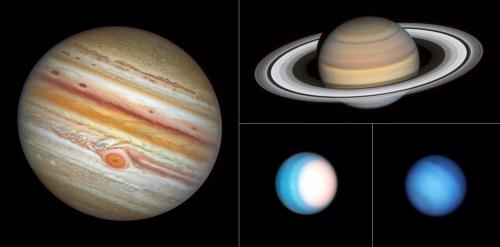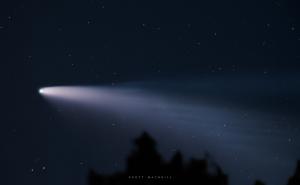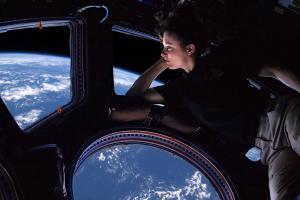Celebration of Space - December 3, 2021

The 2021 Hubble Grand Tour photo. Credit: NASA, ESA, A. Simon (NASA-GSFC), and M. H. Wong (UC Berkeley); Image Processing: J. DePasquale (STScI)
Every year, the Hubble Space Telescope (HST) completes a photographic set of the outer Solar System planets, called the Hubble Grand Tour. The planets that HST will photograph are Jupiter, Saturn, Uranus, and Neptune. The point of the Grand Tour photo set is to monitor and identify changing processes on the outer planets. Things like the decrease in size of Jupiter’s Great Red Spot, changes to the hexagon around Saturn’s poles, apparent directional changes of the Great Dark Spot on Neptune, and cloud activity on Uranus. These are all real examples of changing processes that the Grand Tour has showcased. Aside from all that, the Grand Tour gives us a fantastic view of these distant worlds. Take a moment to check out the 2021 panel. The Jupiter image was captured on September 24, 2021, with the Saturn image being captured on September 12, 2021, Uranus was the target of HST on October 25, 2021, and Neptune showed off its beautiful self on September 7, 2021.
Last Friday we wrote about Venus’ brightening and why this happens (https://frostydrew.org/publications.dc/show/entry-1366/). Well Venus is currently at its brightest for 2021, making for beautiful opportunities to see the super bright planet. Venus is the third brightest object in the sky with only the Sun and Moon outshining it. On dark nights at Frosty Drew when Venus is high enough in the sky, its brightness will cast subtle shadows from objects on the landscape. Step outside during dusk or early twilight and look to the SW. That super bright object that looks like an airplane is Venus. Even though Venus is at its brightest right now, it will still remain bright until the viewing season is over.
Over the past month we have been monitoring a new comet, C/2021 A1 Leonard, which was discovered earlier this year. Comet Leonard has the prospects of becoming the brightest comet of the year, potentially reaching naked eye visibility in early-mid December 2021. Well the comet continues to brighten and is on track to become, at least, easily binocular visible in the morning sky. The comet will make its closest approach to Earth on December 13, 2021 at 21,751,337 miles distant. After which is will continue on its path towards perihelion (closest approach to the Sun), which will happen on January 3, 2022. The time to get out and see Comet Leonard is now! The comet is brightening and is well above the horizon in the morning hours as it is currently passing through the constellation Bootes. Additionally, now that the New Moon is here, super dark sky conditions will persist in the morning for the next couple of weeks. Here is an updating star chart of Comet Leonard’s location. The comet will be its brightest around December 12th and then potentially very bright in sunset around January 3rd. Now get out and see some comet awesomeness!
Over the past couple of weeks, the International Space Station has been passing over our region during the evening hours. In our opinion, evening passes of the ISS are the most family friendly because they happen during a time when most of the family is awake and at home. Evening passes will continue, daily, until December 12, 2021. Here are a few notable passes of the station for this week:
Fri, Dec 3 at 5:25 pm, starting in the NW, rising to 24° and into orbital sunset.
Sat, Dec 4 at 6:14 pm, starting in the NW, rising to 45° and into orbital sunset.
Sun, Dec 5 at 5:27 pm, starting in the NW, rising to 46°, heading towards the E and into orbital sunset
Mon, Dec 6 at 6:17 pm, starting in the WNW, rising to 37°, and into orbital sunset.
Tue, Dec 7 at 5:30 pm, starting in the WNW, rising to 65°, heading towards the SE ← Awesome Pass!
Wed, Dec 8 at 4:42 pm, starting in the NW, rising to 75°, heading towards the ESE ← Awesome Pass!
Thu, Dec 9 at 5:32 pm, starting in the W, rising to 22°, heading towards the S
Note that these time are applicable for Southern New England and generally acceptable for the entire Northeast. Set your alarm and mark your calendars. Perhaps take a stroll around your neighborhood to enjoy holiday displays, and catch a view of humanity’s only continually inhabited space-based residency passing overhead.
- Author:
- Scott MacNeill
- Entry Date:
- Dec 3, 2021
- Published Under:
- Scott MacNeill's Columns




